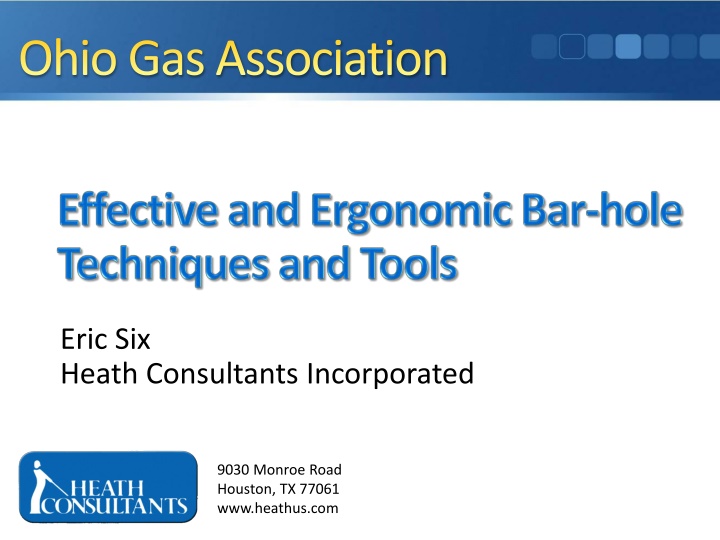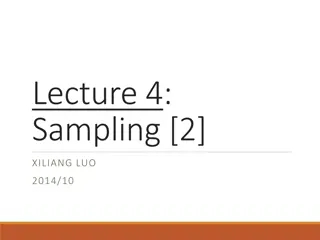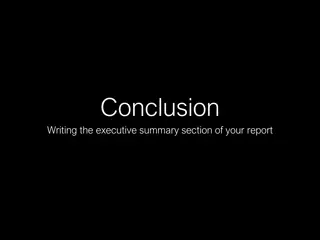Safety Procedures for Using Plunger Bar in Gas Sampling
This manual outlines safety procedures for using a Plunger Bar in gas sampling operations to prevent risks to the operator and surrounding property. It emphasizes the importance of following instructions for proper use and maintenance to ensure safe operation. Users must comply with the precautions and guidelines provided in the manual to prevent injury or damage. The document covers warnings, a detailed overview of the procedure, and the necessity of personal protective equipment for safe use of the equipment.
Uploaded on Sep 15, 2024 | 1 Views
Download Presentation

Please find below an Image/Link to download the presentation.
The content on the website is provided AS IS for your information and personal use only. It may not be sold, licensed, or shared on other websites without obtaining consent from the author.If you encounter any issues during the download, it is possible that the publisher has removed the file from their server.
You are allowed to download the files provided on this website for personal or commercial use, subject to the condition that they are used lawfully. All files are the property of their respective owners.
The content on the website is provided AS IS for your information and personal use only. It may not be sold, licensed, or shared on other websites without obtaining consent from the author.
E N D
Presentation Transcript
Ohio Gas Association Eric Six Heath Consultants Incorporated 9030 Monroe Road Houston, TX 77061 www.heathus.com
Notice The contents of this manual are proprietary to Heath Consultants (HEATH). Reproduction in whole or in part of this manual is prohibited without the express written consent of HEATH. HEATH operates under a continual product improvement program and reserves the right to make improvements and or changes without prior notification. This manual supersedes all previous manuals for this device.
Warnings It is essential that users of this product understand and follow the instructions for operation and maintenance and the precautions in this manual to ensure that the device is used in a proper and safe manner. For situations where injury to the operator or damage to the product may occur, the warnings enclosed in text boxes in the manual should be shown to alert the operator. It is essential that users of this product understand and follow the instructions for operation and maintenance and the precautions in this manual to ensure that the device is used in a proper and safe manner. For situations where injury to the operator or damage to the product may occur, the warnings enclosed in text boxes in the manual should be shown to alert the operator. It is sole responsibility of the product purchaser/owner to ensure that: (1) all users of the product read, understand and comply with the precautions, instructions for operation and maintenance requirements contained in this manual; (2) the product is used in a proper and safe manner. It is sole responsibility of the product purchaser/owner to ensure that: (1) all users of the product read, understand and comply with the precautions, instructions for operation and maintenance requirements contained in this manual; (2) the product is used in a proper and safe manner. HEATH only warrants that parts manufactured by HEATH will be as specified and free of defects. HEATH makes no other warranties or representations of any kind whatsoever, expressed or implied. Any implied warranties, including any warranty of merchantability and fitness for a particular purpose or use, are hereby disclaimed. HEATH only warrants that parts manufactured by HEATH will be as specified and free of defects. HEATH makes no other warranties or representations of any kind whatsoever, expressed or implied. Any implied warranties, including any warranty of merchantability and fitness for a particular purpose or use, are hereby disclaimed.
Overview This procedure describes the detailed steps to follow to ensure safety when bar holing using a Plunger Bar only. This procedure does not describe how to pinpoint a gas leak or any other applications using the Plunger Bar. Please follow your utility s proper procedures and steps for any other particular application. This procedure describes the detailed steps to follow to ensure safety when bar holing using a Plunger Bar only. This procedure does not describe how to pinpoint a gas leak or any other applications using the Plunger Bar. Please follow your utility s proper procedures and steps for any other particular application.WARNING The Plunger Bar is equipment used to make a gas sampling hole in the ground. Safe use of the Plunger Bar as explained in this procedure is paramount. Otherwise, tremendous danger to the life and property of the operator and his/her surroundings can occur.
Safety The following personal protective equipment (PPE) is recommended when using the Plunger Bar: Steel-toed shoes Reflective safety vest Safety glasses Hard hat Work gloves Some operators may also require additional personal protection equipment.
Prior to Use Inspect bar for damage; replace it if not suitable for use. Coating damage Bent rod Movement of rod and piston in handle If the rod and piston assembly does not move freely, or you hear loose pieces Condition of ball tip Check the guide plug Should be threaded securely into the handle Should be tight (Guide plug check)
Bar Hole Procedure WARNING When bar holing in areas with poor venting (e.g. wall to wall concrete) or when gas migration may follow the trench line to a structure, use extreme caution to avoid hitting the gas pipe and potentially rupturing it. You may be required to limit the depth of the bar hole or locate the utility line to reduce the risk of hitting a gas pipe. WARNING When driving your bar into the ground, be aware of any undue resistance in the ground which may be caused by an underground utility. If this happens, cease pounding immediately. WARNING Keep the rod tip on the ground when starting a bar hole. WARNING The Plunger Bar is primarily intended for bar holing in soil. Using it to go through hard surfaces (e.g. concrete, asphalt, road bed, etc.) may require excessive force which may cause the bar to fail or result in injury. Should the bar become wedged and stuck in the ground, trying to remove the bar by jerking it may cause bar failure or injury. Alternative drilling tools should be used for hard surfaces.
Bar Hole Procedure contd Prior to placing any bar holes, read any signs on the street (such as those placed by utilities) and look for the presence of any underground structures. Look for any underground markers, valve boxes, manhole lids, pedestals, electric distribution transformers, telephone, cable and electric drops, curb boxes on the gas and water lines and pre-existing mark outs. This includes TV cable, street lights, traffic lights, hidden dog fences, sprinkler systems, heated sidewalks, etc. This list is given just as an example and is not exhaustive of all the things that could be present underground. Never knowingly bar hole over your own underground facilities or those of another utility.
How to Put Bar Holes in Place Place the end of the rod on the ground at the point where you want the hole, then position the rod in a vertical position. Raise the handle with one or both hands, then bring the handle down, allowing the weight of the handle to drive the rod into the ground. Release your grip slightly at the moment of impact. Do not try to force the bar into the ground by the strength of your shoulders or back. Do not have multiple people apply force on the handle to drive the rod. If ground resistance is too strong to drive the rod, ascertain the reason. Different equipment may be needed. Stand erect with bent knees hold the Plunger Bar away from your face and body. Pound the bar down a couple of inches then work bar around in a circular fashion.
How to Put Bar Holes in Place contd Repeat the process until the desired depth has been reached. As the Plunger Bar is driven deeper, bend your knees, not your back. Once the bar hole is completed to the desired depth, you can reverse the handle action to remove the Plunger Bar form the hole. Raise the handle with your hands, allowing the weight of the handle to pull the rod out of the ground. Be sure to keep your head clear people have been known to knock themselves out by hitting themselves in the chin. Check the guide plug frequently during use. CAUTION Always keep your back straight, keep the Plunger Bar handle away from your face and upper body. Keep knees bent.
Things to Consider Some companies limit the maximum depth for bar holing (typically to 18 inches). This minimizes the potential for injury and damage to the underground utilities. When bar holing to classify a leak, our primary focus is the migration of the gas to underground and above ground structures and buildings; we are not pinpointing the leak for repair. Please follow your utility s procedure for pinpointing and classifying leaks. How to carry the bar: the most practical way to carry the bar is to place the handle on the ground, grasp the handle about 6 to 8 from the bottom of the handle, then rest the rod on your shoulder, the bar should be upside- down at this point. Make certain you grasp the rod securely and far enough down so that your hand does not get pinched between the rod and the handle. By doing this, you have the bar parallel and to one side of your body, where you can control it. Do not place the handle over your shoulder with rod behind you. You will be unable to watch it, and you run the risk of injuring someone around you.
Conclusion Safety is paramount when using the Heath Consultants Incorporated Plunger Bar. Review your company s written procedures regarding required PPE, placement of bar holes and maximum bar hole depth.























